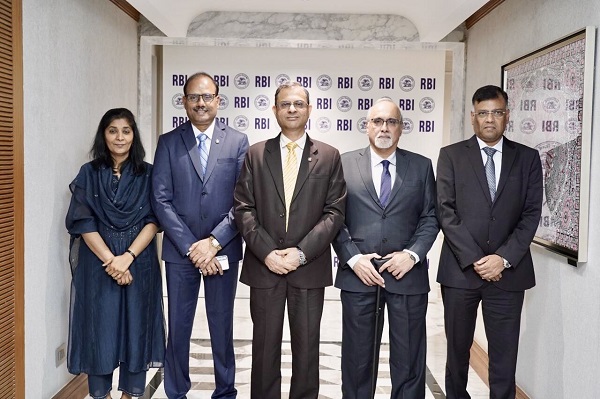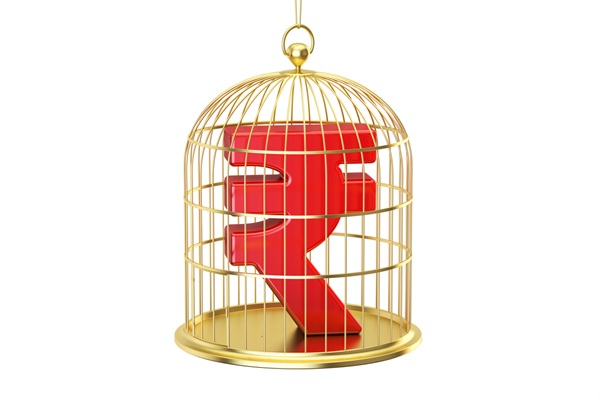.png)
The Real Story Behind India’s Gold Rush: Signals, Not Contradictions
Gold demand surged despite calm macros for reasons rooted in psychology, not fear. India’s financial actions reflect diverse motives that leaders must learn to read. People aren’t irrational. Our narratives about them are lazy.


Kirti Tarang Pande is a psychologist, researcher, and brand strategist specialising in the intersection of mental health, societal resilience, and organisational behaviour.
November 27, 2025 at 6:20 AM IST
So why did gold prices surge over 12% in a month of low inflation and otherwise cheerful macro data? Because financial behaviour is never the outcome of one clean input. Not in a country as layered, unequal, and emotionally varied as ours. It is shaped by a tangle of cognitive biases, emotional accounts, and socio-cultural scripts.
India has always been a land of paradoxical signals. Record car sales in the same month that gold prices rise as though the ground were shifting. Mutual fund inflows hitting all-time highs while households quietly accumulate coins, bars, and ETFs with the seriousness of a family preparing for a long winter.
For years, we tried to explain these contradictions with one lazy phrase—“the Indian mindset.” As if any nation of 1.4 billion people could be held inside a single psychological frame. But look closer. Beneath the contradictory signals lies something deeply human: the collision of emotion, memory, and expectation—the three forces that govern financial decisions far more than interest rates ever will.
Behavioural Layers
There is a sophisticated, if subconscious, psychology in how Indians navigate uncertainty. They employ what behavioural scientists call mental accounting—treating money differently depending on its source, purpose, or the emotional weight it carries.
A 28-year-old engineer in Bengaluru keeps her SIP running on autopilot (her “growth” account) even as she anxiously scrolls through news of global layoffs. She doesn’t stop investing; she simply starts buying a small gold ETF on the side (her “security” account). This isn’t mere fear. It’s a psychological hedging strategy: build the future, but insure against its volatility.
In Thrissur, a farmer buys a gold coin before Onam. He is not responding to inflation numbers or to the pride of tradition but to intergenerational trauma and embodied memory. His grandfather’s actions, born from a time of tangible scarcity, have been transmitted as a behavioural heuristic: “Gold is security.” For him, gold is a neurobiological anchor in a sea of abstract economic data.
In Ahmedabad, a middle-class couple finally books their first car—an act of optimism bias and a powerful statement of hope over fear. They sign the papers, then call the electrician to fix the inverter, demonstrating a natural bifurcated risk perception: they are bullish on their personal trajectory while remaining bearish on public infrastructure.
These aren’t contradictions in behaviour but evidence of our flawed, monolithic narratives. A farmer’s psychology, shaped by prospect theory (where the pain of loss outweighs the pleasure of gain), is not the same as that of a fintech worker influenced by recency bias from trending headlines.
A family that lived through famine carries a different emotional inheritance—a form of epigenetic trauma—from one whose wealth was built in the liberalised 1990s. Behavioural science calls this emotional priors—the internal models that shape how people interpret risk. None of these can be collapsed into the label of an “Indian psyche.” India does not have one psyche. It has millions.
Gold, in this light, is a global thermostat for collective anxiety, not a domestic thermometer. The recent surge was shaped by global fears and seasonal demand. But the critical psychological question isn’t “Why are Indians fearful?” but “What specific psychological needs does gold fulfil for different segments?”
Retail households bought gold as a tangible asset to counter the abstract anxiety of digital finance and geopolitical instability—a phenomenon linked to the endowment effect, where people value what they can physically hold more highly.
Urban professionals used gold ETFs as a strategic hedge, a rational response within a barbell investment strategy balancing high-risk and no-risk assets.
This segmentation is the core of the story. If fear were universal, why record car sales and equity inflows? Because cognitive dissonance is a myth in lived experience; people comfortably maintain compartmentalised emotional states. They can be hopeful in one domain (career, personal mobility) and cautious in another (global politics, generational wealth).
Financial behaviour is therefore a complex output of competing psychological systems: the intuitive, emotional “System 1” that feels the pull of tradition and the calculated, logical “System 2” that analyses portfolio diversification.
The real danger lies in our lazy narratives. We engage in attribution bias, romanticising gold-buying as “cultural wisdom” when it aligns with our pride, but pathologising it as “irrational fear” when it contradicts our spreadsheets. From a rational actor model, buying gold during low inflation is an error. From a behavioural economics perspective, it is a logical response to probability neglect—where the small chance of a catastrophic event dominates decision-making more than its statistical likelihood.
The greatest intellectual error is the psychology-projection fallacy: assuming that macro stability automatically produces psychological stability. It does not. People do not live inside statistical charts. They live inside lived realities filtered through cognitive biases: layoffs (loss aversion), medical bills (salience bias), and family memories of loss (availability heuristic). Data may calm economists; it rarely calibrates a society’s amygdala.
The imperative for leaders, then, is to build psychological infrastructure alongside financial infrastructure. This requires:
Audience Segmentation by Psychological Profile: Move beyond monolithic dashboards. Track sentiment separately for groups defined not just by income, but by their financial anxiety triggers, time horizons, and cultural narratives.
Audience Segmentation by Psychological Profile: Move beyond monolithic dashboards. Track sentiment not just by income, but by financial anxiety triggers, time horizons, and cultural narratives.
Treat Gold as a Psychological Indicator: Interpret demand not as pathology, but as a signal of specific fears—global, currency-related, or cultural.
Communicate with Emotional Intelligence: Economic data must be translated into the language of psychological needs. “Inflation at 4.8%” is a statistic; “protection for your family’s grocery budget” is a meaningful promise. Leaders must resist overselling calm, which becomes a form of gaslighting when lived experience contradicts it. Acknowledge uncertainty to build trust.
And this brings us back to where we began.
India is not a frightened country.
It is not an irrational country.
It is not a single story.
It is millions of emotional histories negotiating one economic present. Gold does not reflect panic; it reflects a mosaic of motives—protection, culture, memory, strategy, inheritance, and expectation.
If leaders learn to read these motives as signals rather than contradictions, India’s markets stop looking chaotic or confused. They become coherent—less like noise, and more like a conversation. A country deliberately balancing many futures at once.



